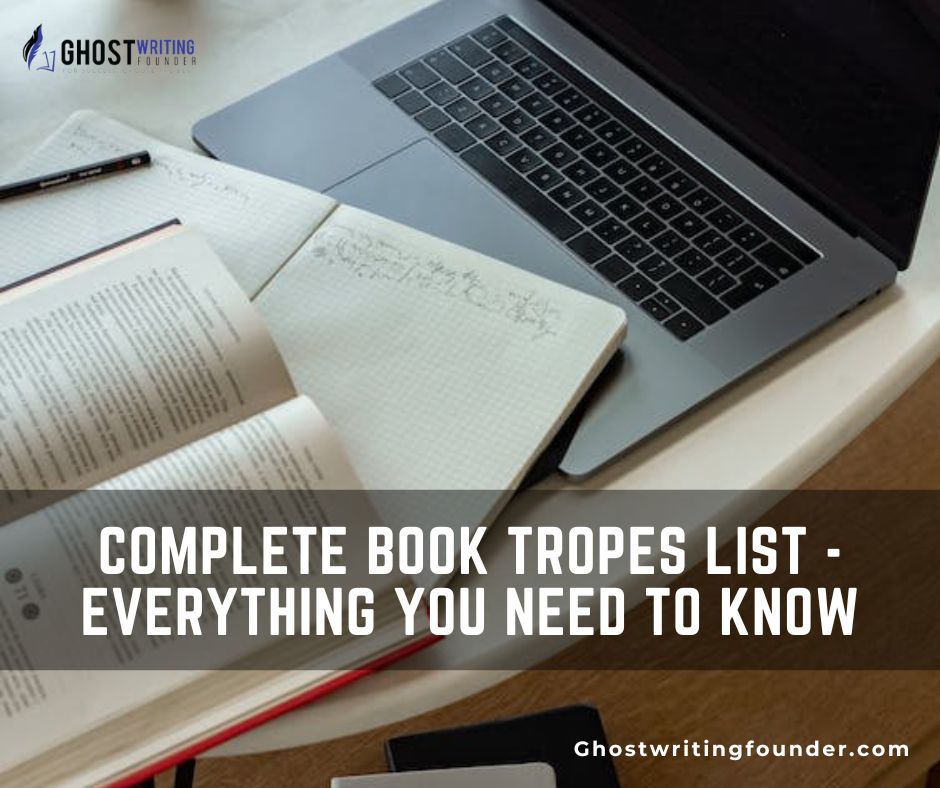
Book Writing
Introduction
Tropes are patterns and themes that are often used in writing. These writing tools have been used for hundreds of years to keep readers’ attention, make them feel something, and give them a memorable experience. Getting into the world of book tropes can be a fascinating trip, whether you are a big reader, want to be a writer, or are just interested in how stories work. In this piece, we’ll discuss book tropes, figure out what they mean, and learn how they shape the stories we love reading.
What are Tropes?
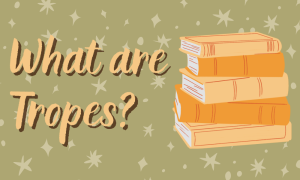 Tropes are the building blocks of stories. They are used in many different types of stories and media, making it easier for writers and their audiences to understand each other. These recurring themes, plot devices, and character archetypes are deeply ingrained in the collective psyche. They shape how we understand stories. Understanding Book Tropes gives writers and viewers a common language that makes it easier to spot familiar patterns and get more into the story, much like the insights provided in our guide on writing short film scripts that connect.
Tropes are the building blocks of stories. They are used in many different types of stories and media, making it easier for writers and their audiences to understand each other. These recurring themes, plot devices, and character archetypes are deeply ingrained in the collective psyche. They shape how we understand stories. Understanding Book Tropes gives writers and viewers a common language that makes it easier to spot familiar patterns and get more into the story, much like the insights provided in our guide on writing short film scripts that connect.
The Function of Tropes
 Tropes are an important part of storytelling because they are shortcuts that help writers quickly get across complicated ideas and feelings. Instead of making up every detail from scratch, writers can use well-known Book Tropes to explain a certain idea or make the audience feel a certain way. For example, the “hero’s journey” trope shows a clear pattern: the main character goes on a quest, faces problems, and becomes a hero. By using this trope, writers can quickly show how characters change and how the story progresses.
Tropes are an important part of storytelling because they are shortcuts that help writers quickly get across complicated ideas and feelings. Instead of making up every detail from scratch, writers can use well-known Book Tropes to explain a certain idea or make the audience feel a certain way. For example, the “hero’s journey” trope shows a clear pattern: the main character goes on a quest, faces problems, and becomes a hero. By using this trope, writers can quickly show how characters change and how the story progresses.
Fantasy and Adventure Tropes
 Fantasy and adventure genres boast a rich tapestry of tropes that transport readers to magical realms and thrilling quests. The “chosen one” trope is a prominent example where a seemingly ordinary individual discovers their extraordinary destiny and must rise to the challenge of saving the world. Another popular trope, the “quest for a magical artifact,” sees characters embarking on a perilous journey to find a powerful object that can alter the fate of their world.
Fantasy and adventure genres boast a rich tapestry of tropes that transport readers to magical realms and thrilling quests. The “chosen one” trope is a prominent example where a seemingly ordinary individual discovers their extraordinary destiny and must rise to the challenge of saving the world. Another popular trope, the “quest for a magical artifact,” sees characters embarking on a perilous journey to find a powerful object that can alter the fate of their world.
Challenges of Tropes
 While tropes can be powerful storytelling tools, they also present the risk of falling into clichés and predictability. Overusing tropes without adding unique twists or fresh perspectives might result in a lack of originality and engagement.
While tropes can be powerful storytelling tools, they also present the risk of falling into clichés and predictability. Overusing tropes without adding unique twists or fresh perspectives might result in a lack of originality and engagement.
Skillful writers, however, can subvert tropes, turn them on their heads, or combine them in innovative ways, creating stories that surprise and captivate readers, much like the unique narratives found in our best book club books for 2023.
Why are Tropes Used in Books?
Let’s discuss this in detail.
Building Emotional Connections with Readers
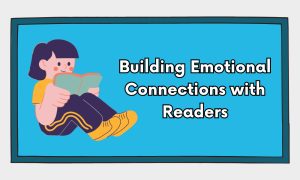 Tropes often draw upon universal themes and experiences that resonate with readers personally. Whether it’s the classic hero’s journey, the underdog’s triumph, or the forbidden love, these tropes evoke emotions that readers can relate to from their own lives.
Tropes often draw upon universal themes and experiences that resonate with readers personally. Whether it’s the classic hero’s journey, the underdog’s triumph, or the forbidden love, these tropes evoke emotions that readers can relate to from their own lives.
Familiar tropes can give readers a deeper understanding of characters’ motivations and actions. When readers recognize a character archetype, they can quickly grasp their strengths, weaknesses, and desires, which helps build empathy and emotional investment in the story.
Guiding Story Structure and Pacing
 Tropes serve as narrative guidelines, allowing authors to build cohesive story arcs and provide a logical flow to their plot. By adhering to familiar storytelling structures, writers can maintain a sense of coherence, preventing the story from becoming too convoluted or confusing.
Tropes serve as narrative guidelines, allowing authors to build cohesive story arcs and provide a logical flow to their plot. By adhering to familiar storytelling structures, writers can maintain a sense of coherence, preventing the story from becoming too convoluted or confusing.
Tropes offers a starting point for authors to explore different story avenues. They act as a foundation for writers to add unique twists and turns, ensuring the plot remains engaging and unpredictable despite following established conventions.
Establishing Genre Expectations
 Tropes are closely associated with specific genres, such as romance, fantasy, mystery, or science fiction. By using well-known tropes, authors signal to readers the genre they are exploring, helping readers find the stories they enjoy and ensuring their expectations are met.
Tropes are closely associated with specific genres, such as romance, fantasy, mystery, or science fiction. By using well-known tropes, authors signal to readers the genre they are exploring, helping readers find the stories they enjoy and ensuring their expectations are met.
Tropes create a shared language within genre communities, allowing readers to discuss and analyze stories based on common elements and themes. This fosters a sense of belonging and connection among readers with similar literary preferences.
Reflecting Cultural and Historical Contexts
 Tropes often emerge from cultural myths, folklore, and historical narratives. By incorporating these tropes into contemporary literature, authors keep cultural traditions alive, preserving the essence of their origins while infusing them with modern relevance.
Tropes often emerge from cultural myths, folklore, and historical narratives. By incorporating these tropes into contemporary literature, authors keep cultural traditions alive, preserving the essence of their origins while infusing them with modern relevance.
Tropes can be used as allegories or metaphors to address relevant social and political issues. They provide authors with a way to explore complex topics indirectly, encouraging readers to ponder and reflect on the underlying messages within the narrative.
Providing a Platform for Creativity and Innovation
 While tropes can create a sense of familiarity, authors can use them as a canvas for creativity by subverting expectations. By challenging conventional outcomes or character arcs, writers surprise and engage readers, making their stories stand out in a sea of familiar narratives.
While tropes can create a sense of familiarity, authors can use them as a canvas for creativity by subverting expectations. By challenging conventional outcomes or character arcs, writers surprise and engage readers, making their stories stand out in a sea of familiar narratives.
Authors often blend multiple tropes to craft unique and compelling stories. The amalgamation of different tropes creates fresh and original narratives that captivate readers while offering a sense of familiarity.
Common Book Tropes
Let’s see the example of Common Book Tropes.
The Chosen One
 One of the most beloved tropes, “The Chosen One,” revolves around a protagonist destined to fulfill a significant role in the story’s world. This trope often involves a hero with unique abilities, foretold by prophecy, who embarks on a journey to save the day.
One of the most beloved tropes, “The Chosen One,” revolves around a protagonist destined to fulfill a significant role in the story’s world. This trope often involves a hero with unique abilities, foretold by prophecy, who embarks on a journey to save the day.
Love Triangle
 The love triangle trope introduces romantic tension by involving three characters in complex relationships, a dynamic also explored in our best-selling non-fiction books of all time. It keeps readers engrossed as they speculate which character the protagonist will choose. Book Writing services can replicate these types of stories.
The love triangle trope introduces romantic tension by involving three characters in complex relationships, a dynamic also explored in our best-selling non-fiction books of all time. It keeps readers engrossed as they speculate which character the protagonist will choose. Book Writing services can replicate these types of stories.
The Mentor
 “The Mentor” trope features a wise and experienced character who guides and trains the protagonist, providing valuable life lessons and skills to overcome challenges.
“The Mentor” trope features a wise and experienced character who guides and trains the protagonist, providing valuable life lessons and skills to overcome challenges.
Coming of Age
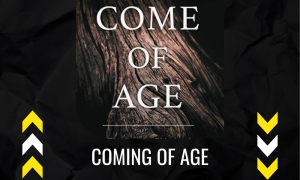 In the coming-of-age trope, the protagonist undergoes personal growth and maturation as they transition from adolescence to adulthood. This trope explores themes of self-discovery, identity, and the challenges of growing up.
In the coming-of-age trope, the protagonist undergoes personal growth and maturation as they transition from adolescence to adulthood. This trope explores themes of self-discovery, identity, and the challenges of growing up.
Dystopian Society
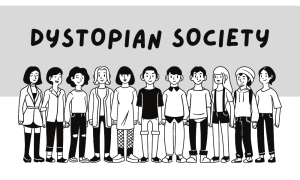 Dystopian society tropes are set in a futuristic world where oppressive regimes and societal issues create the backdrop for the story’s conflict.
Dystopian society tropes are set in a futuristic world where oppressive regimes and societal issues create the backdrop for the story’s conflict.
Rags to Riches
 The “Rags to Riches” trope narrates a character’s journey in poverty or obscurity but rises to great wealth, success, or power.
The “Rags to Riches” trope narrates a character’s journey in poverty or obscurity but rises to great wealth, success, or power.
Forbidden Love
 Forbidden love tropes involve a romance that faces significant obstacles, such as societal taboos, familial opposition, or cultural differences.
Forbidden love tropes involve a romance that faces significant obstacles, such as societal taboos, familial opposition, or cultural differences.
The Hero’s Journey
 The hero’s journey is a classic trope involving a protagonist’s transformative adventure, facing trials and tribulations to emerge as a hero.
The hero’s journey is a classic trope involving a protagonist’s transformative adventure, facing trials and tribulations to emerge as a hero.
Redemption Arc
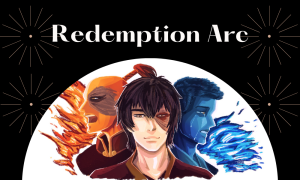 The redemption arc trope portrays a character seeking redemption for past actions, often through self-sacrifice and personal growth.
The redemption arc trope portrays a character seeking redemption for past actions, often through self-sacrifice and personal growth.
The Prophecy
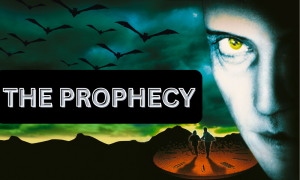 In this trope, the story revolves around a prophecy that foretells a significant event or the rise of a heroic figure, creating an air of destiny and inevitability.
In this trope, the story revolves around a prophecy that foretells a significant event or the rise of a heroic figure, creating an air of destiny and inevitability.
Femme Fatale
 The femme fatale trope portrays a seductive, mysterious female character who ensnares other characters, often leading to their downfall.
The femme fatale trope portrays a seductive, mysterious female character who ensnares other characters, often leading to their downfall.
Why Subvert Tropes?
Subverting tropes add depth and originality to a story, defying expectations and keeping readers engaged. Authors can surprise their audience by challenging established norms and providing fresh perspectives on well-worn themes.
Examples of Subverted Tropes in Books
 Numerous authors have successfully subverted traditional tropes in their works. For instance, a story might portray a seemingly villainous character who ultimately redeems themselves, or a love triangle might be resolved through genuine friendship rather than romantic rivalry. These are fiction book writing types, and for those looking to craft their own, our children’s book editor services can provide the necessary guidance.
Numerous authors have successfully subverted traditional tropes in their works. For instance, a story might portray a seemingly villainous character who ultimately redeems themselves, or a love triangle might be resolved through genuine friendship rather than romantic rivalry. These are fiction book writing types, and for those looking to craft their own, our children’s book editor services can provide the necessary guidance.
Blending Tropes
 Authors can create unique narratives by blending multiple tropes. This allows for intricate plots and complex character arcs that captivate readers with their unpredictability.
Authors can create unique narratives by blending multiple tropes. This allows for intricate plots and complex character arcs that captivate readers with their unpredictability.
Reimagining Tropes
 Reimagining tropes involves placing familiar elements in unexpected settings or periods, adding layers of novelty to the story.
Reimagining tropes involves placing familiar elements in unexpected settings or periods, adding layers of novelty to the story.
Adding a Twist to Tropes
 By introducing unexpected twists to conventional tropes, writers can keep readers on edge, eager to discover how the story unfolds.
By introducing unexpected twists to conventional tropes, writers can keep readers on edge, eager to discover how the story unfolds.
Impact of Tropes on Readers
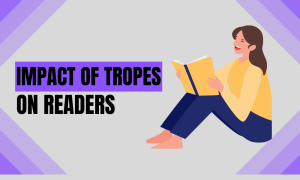 Tropes significantly shape a reader’s experience and can positively and negatively affect their engagement with a story. One of the main benefits of using tropes is the comfort and familiarity they offer. When readers encounter familiar character archetypes, plot structures, or themes, it creates a sense of comfort and nostalgia. Readers find solace in the fact that they are delving into a world they have experienced or imagined before, making it easier for them to connect emotionally with the story.
Tropes significantly shape a reader’s experience and can positively and negatively affect their engagement with a story. One of the main benefits of using tropes is the comfort and familiarity they offer. When readers encounter familiar character archetypes, plot structures, or themes, it creates a sense of comfort and nostalgia. Readers find solace in the fact that they are delving into a world they have experienced or imagined before, making it easier for them to connect emotionally with the story.
Moreover, well-executed tropes have the power to enhance reader engagement. By using tropes, authors can set up certain expectations within the minds of their readers. This anticipation makes readers more invested in the unfolding narrative as they eagerly wait to see how the story will fulfill or subvert those expectations. Cleverly executed twists on familiar tropes can leave a lasting impact, making the reading experience enjoyable and memorable.
However, a fine balance is required when employing tropes, as overusing or poorly executing them can lead to reader fatigue. When tropes become too predictable or clichéd, it can hinder the story’s overall impact. Services like Ghostwriting Founder can help you in finding the right balance. Readers might start feeling that they have repeatedly seen the same narrative elements, leading to a loss of interest and emotional attachment to the characters and plot. In such cases, the story risks becoming forgettable and lacking the freshness that captures readers’ attention.
The key lies in the skillful and creative use of tropes. Authors should understand their audience’s expectations and navigate between adhering to traditional conventions and subverting them. When employed thoughtfully, tropes can become powerful tools in crafting a compelling narrative that resonates with readers on a deep level, a concept that is central to our book writing services.
Avoiding Clichés
 Authors must balance using familiar tropes and adding original elements to create a compelling and fresh narrative. Knowing your target audience’s preferences and expectations can help craft a story that resonates with them.
Authors must balance using familiar tropes and adding original elements to create a compelling and fresh narrative. Knowing your target audience’s preferences and expectations can help craft a story that resonates with them.
Advice for authors
Here are some tips
Researching Tropes
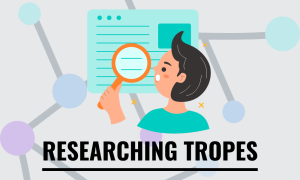 If writers want to write interesting and new stories, they should start by doing a lot of research on different tropes. Learn where these ways of telling a story came from and how they are often changed. Learn the common tropes in your chosen field and how other authors have creatively used them. This study will help you avoid overused clichés and tropes and instead give you ideas for new ways to deal with them.
If writers want to write interesting and new stories, they should start by doing a lot of research on different tropes. Learn where these ways of telling a story came from and how they are often changed. Learn the common tropes in your chosen field and how other authors have creatively used them. This study will help you avoid overused clichés and tropes and instead give you ideas for new ways to deal with them.
Developing Unique Characters
 The people in a story are what make it interesting. Try to make personalities that feel real and that readers can relate to. Try not to fall into one-dimensional stereotypes. Instead, make characters with strengths, flaws, and many different layers. Learn about their pasts, what drives them, and the problems they face in life. Connect with their feelings and wants so readers can feel what they are going through and care about how they change.
The people in a story are what make it interesting. Try to make personalities that feel real and that readers can relate to. Try not to fall into one-dimensional stereotypes. Instead, make characters with strengths, flaws, and many different layers. Learn about their pasts, what drives them, and the problems they face in life. Connect with their feelings and wants so readers can feel what they are going through and care about how they change.
Crafting Compelling Plots
 A good story is important to keep readers interested and turning pages. Try to find a good mix of familiar parts that draw people in and surprises that keep them guessing. Outline the main plot points, tensions, and character arcs ahead of time to make sure the story flows well and makes sense. Ensure the stakes are high and the characters face problems that push them to their limits. This will help them grow and change as people.
A good story is important to keep readers interested and turning pages. Try to find a good mix of familiar parts that draw people in and surprises that keep them guessing. Outline the main plot points, tensions, and character arcs ahead of time to make sure the story flows well and makes sense. Ensure the stakes are high and the characters face problems that push them to their limits. This will help them grow and change as people.
Finding the Right Balance Between Tropes and Originality
Tropes can be a strong way to connect with readers through familiarity and expectations of the genre. But if you only use tropes, your story might be too easy to guess. Add original ideas, interesting changes, and new concepts to your story to make it better and stand out. Try mixing different tropes or turning them on their heads to surprise and engage your audience.
Focus on Themes
Themes are the messages or ideas that run through your story and give it strength and meaning. Think about what you want your readers to learn from your story. Themes can connect different parts of your story, like how your characters change and the plot moves forward. Weave your themes into the story to make sense and have an effect.
Show, Don’t Tell
One of the most popular pieces of writing advice is to “show, don’t tell.” Instead of telling readers everything straight, use descriptive language, dialogue, and actions to show how characters feel, what they’re like, and what’s happening in the story. This method helps readers get into the world you’ve made and lets them come to conclusions, making them more interested in the story.
Edit and revise
Writing is a process, and it’s important to fully edit and revise your work. Take a break after you finish a draught before going back to it. Look for places where you can improve the characters’ motivations, the story’s flow, and the thematic aspects. Be ready to cut or rewrite parts of your story that don’t add to the whole. You can also learn a lot from getting comments from beta readers or writing groups.
Read a lot
Reading is one of the most important things you can do as a writer. Read a lot of different kinds of books and styles to learn more about how stories are told. Pay attention to how other writers build their characters, pace their stories, and use Book Tropes. Look at what works and what doesn’t, and use what you learn to improve your writing.
Main Attributes and Elaborate Information
| Aspect of Tropes | Description | Creative Insight |
|---|---|---|
| Introduction to Tropes | Tropes as timeless storytelling companions, weaving patterns and themes that beckon readers into a captivating journey. | Embark on the literary rollercoaster where tropes serve as the trusty compass, guiding both writers and readers. |
| Function of Tropes | Tropes as storytelling shortcuts, unleashing the power to convey intricate ideas and emotions with familiarity and ease. | Unravel the magic behind tropes, as storytellers wield these tools to sculpt worlds and evoke emotions effortlessly. |
| Fantasy and Adventure Tropes | Dive into the enchanting realms of fantasy and adventure, where chosen ones rise, artifacts beckon, and destinies unfold. | Traverse the landscapes of imagination, where tropes create portals to worlds where the ordinary meets the extraordinary. |
| Challenges of Tropes | Navigate the delicate balance between the potency of tropes and the pitfalls of predictability, avoiding the abyss of clichés. | Brave the literary frontier, where writers dance on the tightrope of creativity, steering clear of the shadows of overused tropes. |
| Why Subvert Tropes? | Explore the alchemy of subversion, where authors infuse narratives with depth, defying expectations and breathing life into well-trodden paths. | Unshackle the chains of convention, as storytellers embark on the journey of subversion, forging new trails in the literary wilderness. |
| Impact of Tropes on Readers | Delve into the symbiotic relationship between tropes and readers, where familiarity brings comfort, anticipation breeds engagement, and a delicate balance is paramount. | Witness the dance of tropes and readers, where the heartbeat of familiarity harmonizes with the crescendo of unexpected twists. |
| Advice for Authors | Navigate the labyrinth of writing with sage advice, from researching tropes to crafting compelling plots, and striking the delicate balance between tradition and innovation. | Equip the quill-wielding adventurer with the tools to navigate the literary maze, where creativity reigns supreme. |
Conclusion
Book tropes have been a part of writing and have made reading more enjoyable for many years. Knowing what books Tropesare, how they can be used creatively, and how to use them well can help writers make interesting and remembered stories. So, whether you’re a reader or a writer, accept the allure of tropes and let them take you on unforgettable literary adventures.



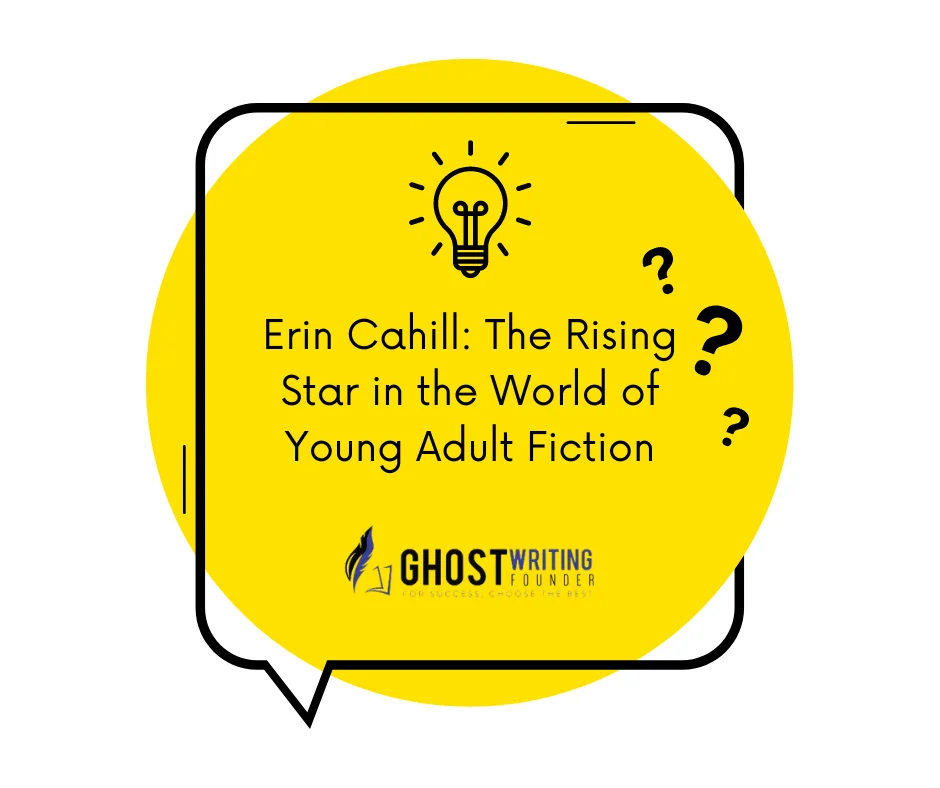





Leave a Reply